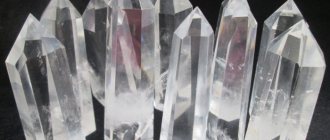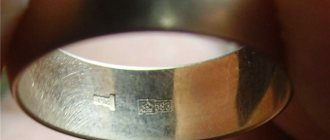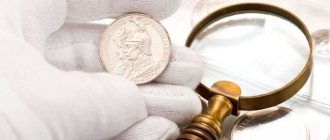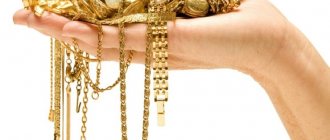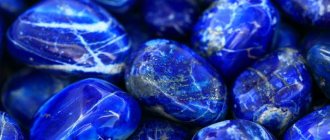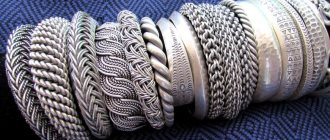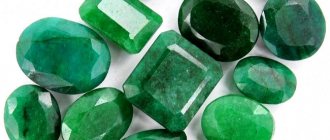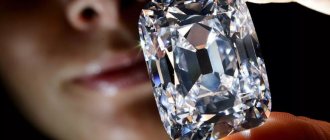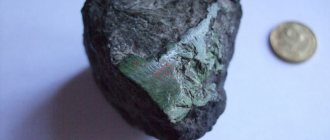| Stone type | Precious |
| Prevalence (Deposits) | Africa, Brazil, India, Colombia, Russia |
| Varieties | Brazilian, Zambian, Zimbabwean, Colombian, Ural |
| Transparency | Transparent, translucent |
| Shine | Glass |
| Mohs hardness scale | 7,5—8 |
| Chemical composition | Be3(Al,Cr)2Si6O18 |
| Color | Green |
| Owner's color type | Spring, autumn |
| Owner's temperament | Sanguine, phlegmatic |
| Names | Anastasia, Valeria, Vladimir, Gennady, Evgenia, Elena, Zinaida, Isabella, Inna, Lada, Nonna, Peter, Rostislav, Semyon, Timofey, Evelina, Yulia, Yuri |
| Zodiac sign | Libra, Aquarius, Virgo, Capricorn, Leo, Aries, Cancer, Pisces, Sagittarius, Taurus |
| Date of Birth | from June 22 to July 22 from February 19 to March 20 |
| Chinese horoscope | Bull, goat, rabbit, rooster |
| Element | Water, Air, Earth, Fire |
| Planet | Venus, Mercury |
| Day of the week | Friday |
| Month | January, April, June |
| Season | Spring, winter, summer |
| Numerology vibration | 5, 7, 22 |
| Chakra | Anahata |
| What stones is it compatible with? | Agate, alabaster, turquoise, white pearls, emerald, lapis lazuli, dark and blue sapphire, sardonyx, light topaz, chalcedony, amber, amber, jasper |
| What stones is it not compatible with? | Aquamarine, beryl, coral, moonstone, opal |
| Therapeutic effect (problems) | Blood pressure, insomnia, headaches, migraines, immunity, psoriasis |
| Therapeutic effect (on organs) | Organs of the gastrointestinal tract, joints |
| Magic properties | Strengthening relationships, finances, energy depletion |
Emerald is a precious and expensive mineral, so when purchasing, you need to be able to distinguish a natural stone from an artificial one.
The crystal belongs to the beryl group: in terms of external qualities and brilliance, it is not inferior to sapphires, diamonds and rubies. The stone is characterized by its green color and high transparency. The cost of 1 carat starts from 25,000 rubles. In this article, we will look at how to choose a real emerald, distinguish it from a fake, and list the most indicative experiments at home. Photos of emerald stones will help you make the right choice when purchasing.
What does a real stone look like?
Natural emeralds are highly prized by jewelers and collectors.
The appearance of natural stone attracts attention and fascinates. Main characteristics of emeralds:
- Color can vary from light green and dull grass to dark marsh. In the modern jewelry market, minerals that have a bright and deep color are rarer and have a high cost. Although previously, stones of a soft green tone were valued much higher.
- They are characterized by a translucent/transparent base, depending on the location of extraction and the quality of the stone. The shade of the mineral is noticeable in any lighting; when looking through it, you can clearly see the closing edge.
- Minor defects of various nature. Emeralds of ideal clarity are extremely rare and are the exception to the rule. Most minerals have small cracks - the difference lies in their size. For example, expensive mountain options have defects that are visible only with multiple magnifications. In lesser quality stones they can be seen with the naked eye. Even on high-quality crystals, light abrasions and minor scratches are acceptable (they indicate natural origin and not a damaged version).
- Interspersed with other minerals. They resemble small vessels and points on the body of the crystal. You can notice this feature only by illuminating the stone with a light source, examining the emerald under the sun's rays.
- Emerald crystals are highly durable (approximately 8 on the Mohs scale). At the same time, the mineral is quite fragile and unstable to mechanical stress. It should not be squeezed or heated - otherwise you may see the appearance of small cracks.
- In rare cases, air bubbles can be found inside emeralds, but such stones require additional jewelry testing (the risk of counterfeiting increases).
Emeralds are characterized by dichroism - when viewed in the light, their hue changes in the range from green to yellow, depending on the inclination and angle of incidence of the light.
Note! Natural green minerals have a high value. If a jewelry store offers you an emerald, the cost of which is less than 5,000 rubles per carat, it is a completely different stone or a synthetic analogue.
Determination of origin
It is unknown when people began to mine real emerald. Cleopatra, who died 30 years BC, wore jewelry made from precious stones. The oldest mines, 200 m deep, in which the mineral was mined for finishing the tombs of the pharaohs, were discovered in Egypt near Aswan, their age is at least 3 thousand years.
Under natural conditions, stone crystals are formed when igneous rocks are exposed to aqueous solutions heated to high temperatures. The process of gem formation lasted millions of years. Most of the stones that are prized for their quality come from Colombian mines. Crystals with a six-pointed star are found here.
Brazil is famous for its light green emeralds of high purity. Mineral deposits were discovered:
- in Tanzania and Zimbabwe;
- in India and Pakistan;
- in Canada and Australia.
Zambia supplies millions of small emerald crystals to the market every year.
At the Malyshevsky mine in Russia, stones are mined in mines at a depth of more than 300 m. The rock is raised to the surface, where it is dried and processed.
By the way! The opaque minerals of the Ural deposit have a pronounced grassy tint.
Recently, emeralds were found in Tanzania, in the crystals of which veins form inclusions of mica, planes with liquids. In South Africa, deposits of an opaque stone of a pale green color were discovered; the cost of these gems is much cheaper.
What is offered under the guise of emerald?
Trade brands
Among the assortment of jewelry stores you can find many trade names that sellers may present as emeralds. Some products are labeled as varieties of a natural mineral - but this is not true. The buyer should be wary if he sees the following names:
- Evening emerald is a natural peridot that has a bright yellow hue. Under artificial light, it takes on a green color and looks no worse than its more expensive counterpart.
- Vilyui stone is an old name for brown vesuvian, which is not related to real emeralds.
- Oriental is a green variety of sapphires, which is inferior in price to emerald.
- Pakistani - garnet or agate of a light green hue with characteristic tints.
The listed stones are completely natural, but do not belong to the emerald class. Their cost is significantly lower, and the characteristics differ from the original green crystal.
Note! When purchasing jewelry with emeralds, you should carefully read the price tag and accompanying documents. Quite often, the real name of the stone according to the mineralogical nomenclature is indicated in small print. It is also worth checking the certificate of authenticity and finding out the origin of the selected gem.
Imitations
Emerald is a top-class stone with a great history and world fame. Therefore, some jewelers try to sell cheaper gems that are not precious, under the guise of a rare mineral. Analogs are characterized by a low price and pronounced brightness of color (natural emerald, in comparison, has a muted tint).
Be sure to watch: What is the difference between a ruby and a garnet, how not to confuse the stones and distinguish a fake
As substitutes for emerald crystals you can find:
- demantoid is a fairly rare Ural mineral with a bright radiance and pronounced luster;
- prehnite is a derivative of calcium rocks and aluminum compounds, quite common in nature and does not have jewelry value;
- Tsavort is a mineral that has a bright green hue and sparkles noticeably in natural light;
- peridot or grossular - semi-precious stones that resemble expensive emeralds only in twilight or artificial lighting;
- Fluorite is a natural mineral whose inclusions resemble the appearance of rare Colombian emeralds.
Note! Quite often, substitute crystals are more expensive than the original gem (for example, an average emerald in terms of characteristics will cost less than an imitation made from dermatoid or jade).
How to understand that this is a real emerald? If you are an inquisitive customer and want to personally check the authenticity...
Published by Golden Gross / Golden Gross Monday, February 11, 2019
Doublets and triplets
An imitation of this nature is made by experienced jewelers, and the resemblance to the original will directly depend on the level of skill and professionalism of the author.
Doublets and triplets consist of successively connected plates in the form of natural stone. The following are used as separate plates:
- low grade natural minerals (cloudy stones)
- emerald fragments and other minerals that have little visual difference (beryl, quartz, etc.)
- various stones in combination with glass.
Several layers are connected using a special paste or adhesive base to match the stone. With magnification and good lighting, the joints inside the stone become clearly visible.
Synthetic stones
Counterfeits of natural emeralds have been around for a long time. However, the work of the craftsmen was of a primitive level and was easily identified by a jewelry maker. Since the end of the 19th century, the process of identifying a fake has become significantly more difficult. At this time, German scientists grew the first emerald in laboratory conditions.
Gradually, the quality of synthetic and natural stone reached the same level. For example, now both options cannot be distinguished by hardness and luminescence in ultraviolet light.
The main difference between artificial stone is its ideal structure without cracks and inclusions, which are characteristic of natural minerals. Also, the analogue does not change shade under sunlight and is resistant to severe mechanical damage.
Glass
The most popular option for counterfeiting emeralds is ordinary glass. The cost of such a basis is as low as possible, which guarantees high profits. Painted bottle glass is very fragile, but beginners can easily confuse it with natural stone.
Note! Air bubbles are often found inside glass counterfeits. Therefore, such a characteristic may be a sign of a fake stone in jewelry.
External features
The mineral acquires a faint yellowish tint when the inclination of the sun's rays changes, but does not shimmer or cast reflections. A real emerald is neither orange, nor pink, nor blue; the stone is colored even green by chrome. Vanadium impurities give the crystals a bluish tint, while iron inclusions give a yellow tint.
Cracks or air bubbles, even in transparent stones, cannot be seen with the naked eye. The top of the crystals has a richer color than the base.
Reference! The most expensive stones resemble pieces of dark green velvet fabric.
What experiments will help you distinguish natural emerald at home?
Visual exploration
External examination of a faceted emerald or jewelry with such an insert is the simplest and most common way to determine the authenticity of a crystal.
Be sure to watch: All about freshwater pearls
Using a standard jewelry loupe, you can determine the number and nature of inclusions inside the stone, the presence of cracks and air bubbles. Some jewelers can accurately determine the birthplace of a stone only based on visual research!
If the selected mineral is in a frame, then such a specimen must be viewed from a distance of at least 2 meters. A real emerald will differ from a fake by the absence of shimmer and excessive shine - the mountain crystal resembles dark green velvet.
A synthetically grown stone can be recognized by the specificity of its facets - they will be strictly parallel. At the same time, the growth lines are strictly ordered (while in natural stones they are located randomly and chaotically).
When examining a natural crystal, there should be no layering - therefore, any hint of it can indicate a doublet or triplet fake. The gluing between individual layers is best seen under bright sunlight.
Important! If you notice distinct layers inside the stone, and there are characteristic inclusions at the gluing points, this is a glass imitation. This option is one of the cheapest and least quality options.
Solid glass fakes are most easily recognized by their external qualities. These options are distinguished by their large sizes and excessive shine in any lighting. The edges of fakes look fuzzy and erased. You can also identify a fake by distinguishing the heating time - a natural stone will remain cool for a long time when in contact with human skin.
Published by Rina Bogaldina Friday, September 19, 2014
Ultraviolet
Using ultraviolet radiation, you can determine imitation stone or ordinary glass. In this case, the natural stone should have a brown-red, uniform shade. The absence of changes in color is a serious argument in favor of a fake.
Note! Other types of counterfeits are not detected by ultraviolet light, so this method cannot be the only verification option.
Water
One way to check the originality of an emerald is to immerse the selected stone in a container of clean water. If a red glow or slight reflection is clearly visible on the surface, this is a fake. In this case, a bright green outline on the water surface can be created by low-quality beryls with an emerald coating.
Also, the original stone should not fade or change color in water. If the background of the stone is pale, it is beryl, a yellow tint may indicate another mineral, peridot (in some cases, natural garnet). The presence of bright flashes of light indicates dispersion - in natural emerald it is extremely low (cubic zirconium may have reflections).
Hardness
The proven strength of natural emerald does not mean its resistance to damage and mechanical stress. By scratching the glass, you can damage the natural crystal - therefore, despite all its effectiveness, such an experience should not be used in practice. Counterfeits may be denser and damage the glass surface.
Problems with sample analysis
Checking the selected sample for originality requires minimal knowledge and auxiliary tools (for example, a magnifying glass, an ultraviolet lamp). However, experiments at home are characterized by some problems and difficulties:
- A natural crystal and a synthetic copy will have the same shade in ultraviolet light, so such a test does not exclude all types of fakes.
- When viewed under a magnifying glass, natural inclusions can easily be confused with layers and air bubbles in the glass. Such an inspection becomes difficult if the stone is small or has a setting.
Important! External analysis can fail a non-professional. For example, expensive and extremely rare Colombian emeralds have an unusual bluish tint. Due to their atypical color, even experienced jewelers can mistake them for an unskilled fake. For this reason, several originality tests should be carried out simultaneously to reduce the possibility of error.
One of the reliable indicators of originality is the refractive index of light. For natural stone it is 1.58, and for fake stone it is 1.55-1.57. Such a microscopic difference can only be recorded using a special device - a refractometer. This device is available only from jewelry makers and is not available for free sale.
other methods
It is good if the stone can be examined from all sides. But what if it is already enclosed in the decoration?
- Place the stone in a place that is well lit (you can point a lamp at it), move away a couple of meters and look at the stone from different angles. A real emerald will not have shimmer or shimmer - it will resemble green velvet.
- You can also detect a fake by comparing the package of documents provided and the price of the finished product. If the passport contains dubious words (for example, “evening” or “Pakistani” emerald), then with a 90% probability it is not an original stone.
- Another sign of a fake stone is the presence of a blue or blue tint, but only if the description in the documents does not mention that the gem comes from Colombia.
Main conclusions
Natural emerald is a rare stone with a fairly high cost. Such characteristics have made it a frequent target for counterfeiting. Fake stones can be found almost anywhere – even in large jewelry stores. For this reason, you should know how to distinguish an original from a fake of varying quality:
- natural stone has a green tint of varying saturation and moderate shine, its surface resembles velvet;
- upon contact with skin, the mineral must remain cool for a long time (the fake heats up quickly);
- When exposed to ultraviolet light, the stone acquires a brown tint.
When purchasing emerald jewelry, you should check the quality certificates. Natural stones always have a document of origin, which the seller must provide upon request.
Share your impressions of what you read and leave feedback in the comments.
The main thing
Factors influencing the price, as well as the properties and qualities inherent in the original, were previously described. Now let's talk about how to distinguish a natural emerald from an artificial one, how to check the quality of the product offered.
Before checking the authenticity of a piece of jewelry, you need to understand the difference and what substitute stones look like. It is with the help of these crystals that emerald jewelry has been counterfeited in the past and is still being made today.
Demantoid is a rare mineral with a pronounced green color, which, like emerald, gives greenish reflections in the sun.
Tourmaline does not have a rich light green color and does not have a large number of reflective particles.
To create fakes, the following are also sometimes used: prehnite, fluorite, tsavorite and other 3rd order minerals.
How to determine the authenticity of an emerald? You will need: a magnifying glass, a refractometer and a color filter.
To conduct an examination at home or in a store, you only need a magnifying glass.
Magical energy of the gem
Nowadays, a rare crystal has successfully replaced synthetic emerald, which is produced artificially using the hydrothermal method. Using this method, it is also possible to artificially produce rubies and sapphires. Despite all the beauty and charm of artificial emeralds, only natural stones have unique properties that are used by traditional healers and professional magicians.
For example, a crystal is often used to purify water, it is able to stabilize blood pressure, and treat headaches and frequent migraines. It is used to treat stomach and bladder diseases. This beautiful gem of rich green color is recommended to be worn by people who suffer from stress, fatigue, and insomnia. Some are even confident that with the help of a crystal you can improve your vision, just look at it for a while every day.
Particularly interesting are those facts that indicate the magical properties of the green gem. Although it is difficult to believe, in ancient times people used it to combat the vices and temptations that are characteristic of humans. Therefore, many revered the stone as a symbol of good intentions and chastity.
Who is it suitable for?
An emerald of 1 carat or more is popular to give to women immediately after the birth of a child. This is a great gift, since the stone will protect the mother and newborn from damage, envy and anger of others, and will support them in difficult times. Gems that are considered family heirlooms are very powerful and are passed down from generation to generation. They are able to absorb the wisdom of all generations and give it to the next heir.
If a person’s work is related to navigation, then it is better for him to choose the brightest emerald as a talisman. The crystal will protect him on a sea voyage, make his mind clear and insightful, reward him with a sense of dignity, generosity, spiritual harmony, and sharpen his intuition.
The gem is able to breathe fresh notes of fantasy into creative minds. He will guide young people on the path of truth and protect them from debauchery and vices. Deceitful and fickle people who live by deception should be wary of emerald. For such people, the positive energy of a stone can turn into a big disaster, because it has not only noble qualities, but also a dark side that opens up when a person is insincere and deceitful.
The beautiful gem is considered the patron saint of people born under the signs of Taurus, Gemini and Cancer. This is not to say that it is unfavorable to other signs of the zodiac, it is just that the crystal does not fully open up to these people. Usually he is neutral towards them or simply does not want to show friendliness.
When deciding to buy an emerald, you must take into account that its price depends on the quality of the cut and the shape of the crystal. In addition, stones are large, large, medium and small. The most in demand are medium-sized stones, which weigh up to 1 carat, and small ones, weighing less than 0.49 carats. The cost of such precious minerals depends on the color saturation and quality. Choosing a stone is not at all difficult, because even an artificial emerald will become a unique decoration for lovely and charming ladies.
